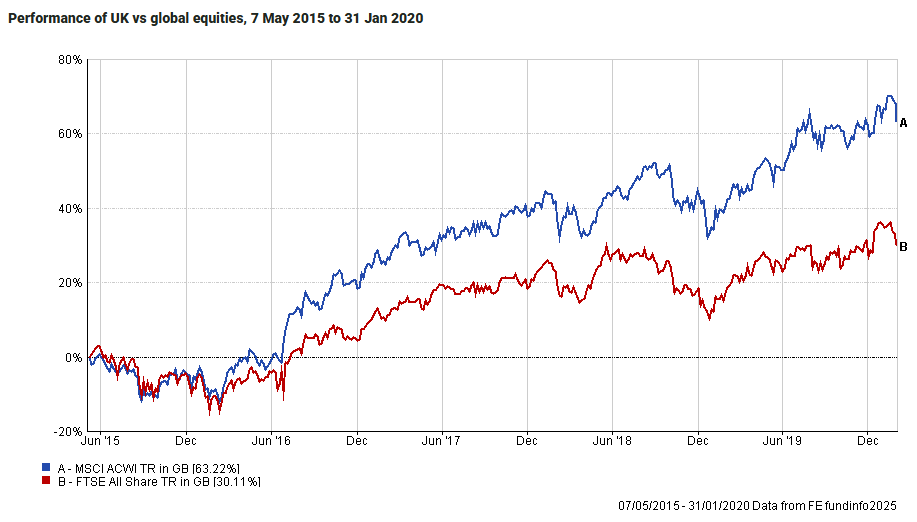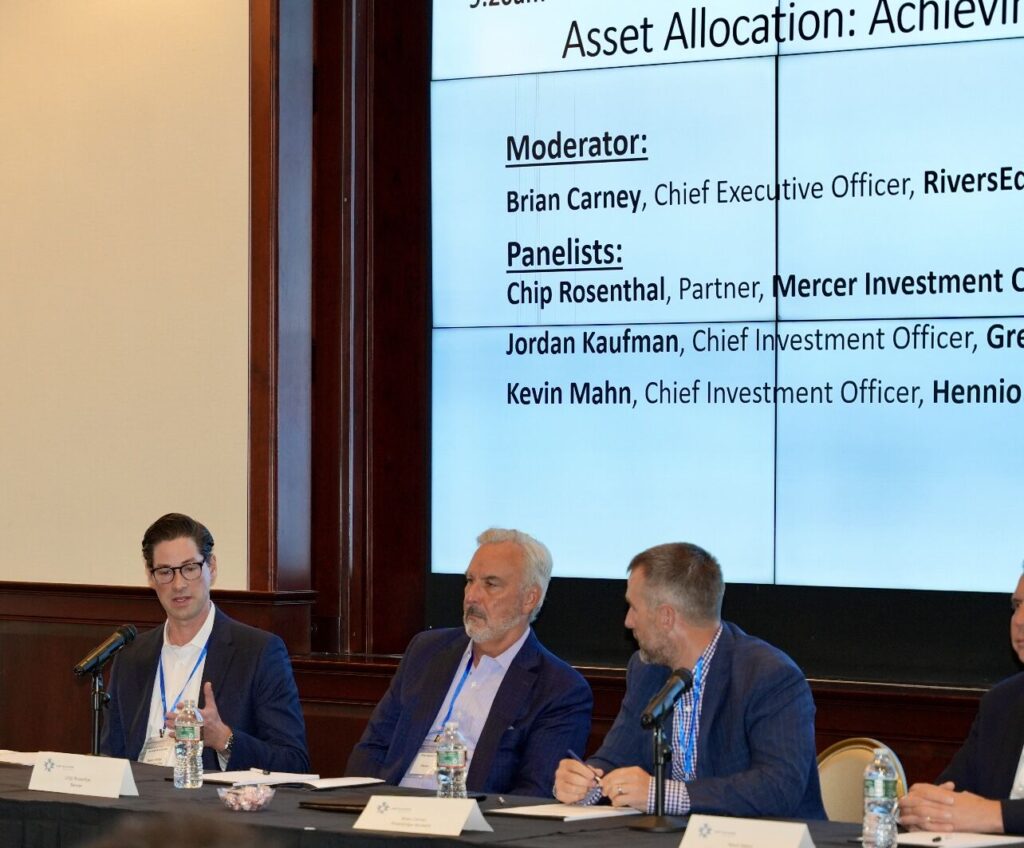Different Actors, Familiar Plot | March Market Commentary
“Jane, get me off this crazy thing!” – George Jetson
For those that are not familiar with the 1960’s famous cartoon family and their characters, Jane and George Jetson live in the year 2062 with their 2 children, dog, and robot maid. If only George Jetson knew then how relevant his cry would be in 2025! In one episode of The Jetsons ("The Jetsons and the Space Mutts"), George tries to buy an exotic space dog—only to find prices sky-high thanks to tariffs on space imports. The takeaway? Even old cartoons knew tariffs make things messy and expensive. It’s almost like they saw it coming, or ……….they really are in the future and were giving us a warning through time.
Fast forward to today: at the end of Q1 2025, the big market stories are all about tariffs... and DOGE. Yes, DOGE, the Department of Government Efficiency. The administration has hinted that the DOGE initiative might be winding down, but the bigger issue—the uncertainty around tariffs—continues to hang over the market like a cartoon anvil. Here’s what’s going on:
Market Snapshot
- S&P 500: -4.3%
- Nasdaq Composite: -10.3%
- Russell 1000 Value: +2.1%
- MSCI EAFE (Developed International Stocks): +6.2%
- Source: YCharts as of March 31st
Economic & Policy Highlights
- U.S. economic growth is slowing: Q1 GDP is projected to be just 0.3%, down from 2.3% in Q4 of 2024.
- Inflation is expected to hover around 2.9% for the year—still above the Fed’s 2% target but soft enough to keep the door open for rate cuts.
The speed of policy changes has made data feel outdated the moment it’s released. In this kind of environment, discipline and perspective matter more than ever. We’ve had a lot of questions lately, here are a few of the big ones:
“Are we headed for a recession?”
Maybe. Recession odds are definitely rising. Goldman Sachs recently bumped their probability from 20% to 35%, and JP Morgan moved from 30% to 40%. Tariff uncertainty is the main culprit.
It’s not just economist hand-wringing either, consumer confidence has taken a hit. According to a University of Michigan Survey, sentiment dropped 11.9% since February and is down 28.2% year-over-year.
Regardless of whether we get the technical definition of a recession, generally defined as a significant, pervasive, and persistent decline in economic activity, commonly characterized by two consecutive quarters of negative gross domestic product (GDP) growth, the damage to confidence has already started. People and businesses are more cautious, and that will have ripple effects. That said, the administration has started backing away from the DOGE project (headed by—you guessed it—Elon Musk) in response to public backlash. Tariffs could be next.
“Should we be selling all our stocks?”
This is where long-term discipline comes into play. Jumping out of a moving train rarely ends well.
Here’s some perspective: S&P 500 revenues are still expected to grow 5%+ in 2025, and earningsare projected to grow 11.5%.
- Goldman Sachs: https://www.goldmansachs.com/insights/articles/the-s-and-p-500-is-forecast-to-return-10-percent-in-2025
Also worth noting:
- China is rolling out its largest stimulus in years
- Europe is increasing defense spending and fiscal activity
- Interest rates in the U.S. are easing on both the short and long ends
In other words, don’t abandon equities, but be thoughtful. As we saw in the performance data above, international and value stocks are holding up well. Shifting your portfolio might be smarter than retreating from it. In periods like this, it really depends on if you are earning an income, close to or in retirement. History has shown us that smart investing and buying on dips yield better results than either sitting on one’s hands or going to safety to later time the market to reenter for better returns.
“But we don’t know what’s going to happen!!!”
Exactly, but we never do. From a random Monday to forecasting Friday’s market, to times like these, we never know. There have been moments in time where we thought things were going to be worse than they were and, instead, we saw raging bull markets and those where negative events came out of nowhere. It’s easy to fall into the “this time is different” trap, but uncertainty is a constant in investing. Remember 2008? Or COVID? We had no idea how long those events would last. Tariffs may be disruptive, but they’re also measurable. They’re not new, and they’re not the end of the world. They are just something that we now must understand how they fit into the equation. The frustrating part is that we don’t know how long or how deep these are going to cut, but a good comparison is Brexit. Ed Legget of Artemis put it well:
(“Five Years Since Brexit in Charts,” Emma Wallis, Trustnet, February 3, 2025).
That uncertainty was rough on UK markets, but they still delivered positive returns in the years that followed. The FTSE underperformed the MSCI All Country World Index, but it didn’t collapse. We’ve seen this movie before. The actors and costumes change, but the plot remains familiar. And the US is in a much more stable and desirable position than the UK was during Brexit.

Final Thoughts
We wish we had clearer skies to report, but we play the hand we’re dealt. While we understand this is jolting for investors at times, it has become the status quo for us through the tech bubble, financial crisis, COVID 19, various administrations, geopolitical tensions, country debt defaults, Inflation, tariffs, and so on over the last 28 years of our experience working with markets. There’s still opportunity out there—plenty of bright spots to be found—and reasons to stay optimistic. We’ll continue watching developments closely and adjusting as needed.
As always, if you have questions or want to talk through anything in your plan, please don’t hesitate to reach out.
Warmly,
Jordan Kaufman
Chief Investment Officer
Green Ridge Wealth Planning
Disclosure:
Green Ridge Wealth Planning, LLC is a registered investment adviser. The information provided here is for general informational purposes only and should not be considered an individualized recommendation or personalized investment/tax advice. The investment/tax strategies mentioned here may not be suitable for everyone. Each investor needs to review an investment/tax strategy for his or her own particular situation before making any investment decision(s). You are responsible for consulting your own investment and/or tax advisor as to the consequences associated with any investment.
The opinions referenced are as of the date of publication and are subject to change due to changes in the market or economic conditions and may not necessarily come to pass. Any opinions, projections, or forward-looking statements expressed herein are solely those of the AUTHOR, may differ from the views or opinions expressed by other areas of Green Ridge Wealth Planning, LLC, and are only for general informational purposes as of the date indicated.




